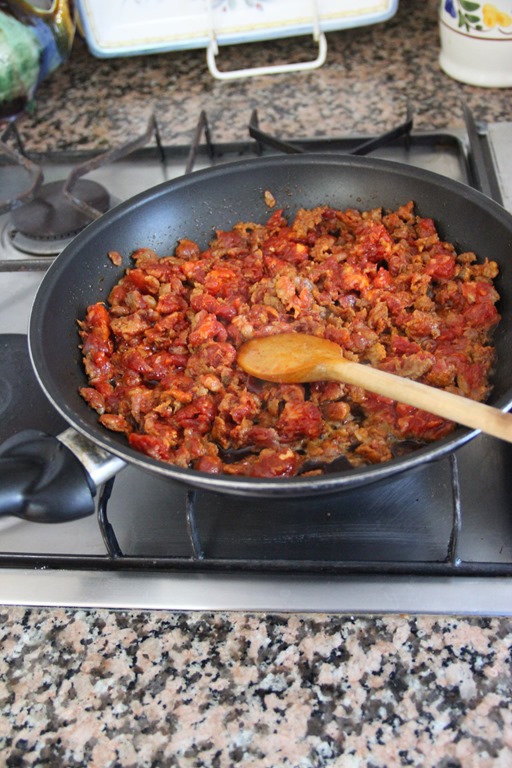I cannot remember when I first tried Mario’s parents’ homemade embutidos (the Spanish word for all types of sausages and salt-cured meats). I do remember, though, the times I’ve eaten chorizo or salchichón in a bar, though. These version are too salty or too chewy, too tough or too lean. I suppose, in a way, I’m a total chorizo snob. (Funny when you consider that chorizo is also a slang word for thief.)
A few autumns ago, I accompanied Mario and his parents to their friends’ finca, or estate/property. Really it’s just a house with a large backyard and a pool. Oh, and now there are a few chickens running around, laying farm-fresh eggs with thick yellow yolks—best consumed fried in olive oil with chichas (known in other parts as picadillo or zorza).
Mario and his godmother/cousin enjoying the finca
My in-laws are zamoranos, Zamorans. They are both from small villages in the Zamora province, located in the northwestern part of Spain, in the autonomous community of Castilla y León. As such, they are accustomed to eating good food. When they were children, their mothers cooked what was local, what was in season, and what tasted good. My father-in-law, Jesús, recalls not being able to afford olive oil, an expensive treat. So they cooked with lard. And you know what? My mother-in-law, Pepita, makes some tasty desserts with lard. Pig products were (and still are) king, and thus cured meats are king: jamón, lomo, fuet, chorizo, and salchichón.
When I got to the house, my in-laws and their friends had already put their manos a la obra!
They don’t actually do their own matanza, though I do know a few families that used to (and some that still do!). They do buy only the best meat, though carne ibérica 100%.
The ingredients for a good chorizo are:
- Pork. 100% Iberian meat. Do not skimp on quality; you will notice later.
- Paprika.
- Coarse salt.
- Garlic.
- Oregano (optional, but it gives the young chorizo and chichas a great flavor).
Steps
- Wash the guts. Yes, I said wash the guts … If you can’t take the heat, stay out of the kitchen (or the finca). You may need to remove some fat.
- Chop the meat into elongated pieces, but not too thick. This helps when you’re trying to put the meat through the machine (as seen above).
- Knead the meat. Once the meat is chopped and the condiments prepared, they are mixed together, until the paprika and salt are well distributed. It should look red.

- Let stand for several hours or overnight.
- One person should fill the machine and turn the crank while the other stuffs the sausage.

- Once the sausage is finished, it’s time to tie the free ends.

- You take the uncured chorizo and salchichón to a cool, dry place to cure. Mario’s parents use an old village house and hang them from the rafters. (Really!) The ideal temperature is cold, but not much lower than 0C/32F.




- Don’t forget to enjoy some chichas with red wine, the perfect way to coger fuerzas on a cold autumnal day!
You may not believe it, but after this mid-morning “snack,” we ate arroz a la zamorana for lunch. This rice dish is full of, again, all the pig parts: ear, hoof, ham, sometimes even snout. You know, a light lunch.











![By Wmfesp (Own work) [GFDL (http://www.gnu.org/copyleft/fdl.html) or CC-BY-SA-3.0 (http://creativecommons.org/licenses/by-sa/3.0/)], via Wikimedia Commons" href="http://commons.wikimedia.org/wiki/File%3AOlla_a_presion.jpg Olla a presion](https://ymuchomas.files.wordpress.com/2014/02/pressure-cooker_thumb.jpg?w=645&h=768)


